5 Things to Check When Buying 2nd Hand Golf Carts for Sale
A well-maintained second-hand golf cart can offer the same functionality as a new one but at a fraction of the price. You can find great deals on platforms like Facebook Marketplace and eBay.
Before making a purchase, it's important to thoroughly inspect the golf cart to ensure you’re getting a quality vehicle. Check the wiring to see if it’s done neatly and look for any signs of corrosion on the frame.
Popular brands like EZGO, Club Car, and Yamaha are often available in excellent condition.
I’ve found that patience and a careful eye can lead to finding a second-hand golf cart that meets all your needs without breaking the bank.
1. Battery Condition and Performance
When buying a second-hand golf cart, the battery's condition greatly impacts its performance and longevity. Critical elements to consider include the battery's age, capacity, range, and signs of wear.
Age of the Battery
The battery's age is crucial. Most golf cart batteries last for about 5-7 years with proper care. If the battery is older, it may not hold a charge as well, reducing the cart's performance.
You should check the manufacturing date on the battery. It's often stamped on the battery cover. Older batteries may need replacement soon, adding to your costs.
Newer batteries are likely to provide better performance. They hold a charge longer and maintain power more effectively. If the seller doesn't know the battery's age, you can look for signs of deterioration.
Battery Capacity and Range
Battery capacity affects how far the golf cart can travel on a single charge. Most electric golf carts use six 8v batteries or four 12v batteries. Higher capacity means longer range. Checking the range can help you determine if the battery is still effective.
You can ask the seller how many hours of running time the battery provides.
It's also helpful to test the cart yourself. Drive it around for a while to see if the battery drains quickly. If it does, it might be time for a new battery, which can be costly.
Signs of Battery Wear
Visible signs of battery wear indicate its condition. Corrosion on battery contacts can lead to poor performance and even damage the cart's electrical system. Look for any white or bluish deposits around the terminals.
Also, inspect the battery sides for any bulging, which suggests internal damage.
Clean and well-maintained batteries are ideal. A dirty or corroded battery may not only underperform but could fail completely. Checking for wear helps you avoid unexpected repairs or replacements. Pay close attention to these signs to ensure you’re making a sound purchase.
2. Motor and Drivetrain
When looking at second-hand golf carts, don't overlook the condition of the motor and drivetrain. These components dictate the performance, speed, and reliability of the cart.
Motor Functionality
First, consider the motor functionality. Whether it's an electric motor or a gas-powered engine, check if it delivers consistent power.
Models like Yamaha, Club Car, and E-Z-GO often have robust motors that stand the test of time.
For electric models, inspect the batteries and wiring. Look for wear or corrosion. Gas-powered engines, on the other hand, need a thorough examination of the oil levels, filters, and spark plugs. Any signs of unusual wear could indicate a need for repairs.
Acceleration and Speed
Acceleration and speed are critical in determining a cart's usability.
A well-maintained motor should provide smooth and gradual acceleration. Compare the performance to manufacturer specifications. For instance, Club Car and E-Z-GO often have standardized speed ranges.
Pay attention to how quickly the cart reaches top speed and how stable it feels while doing so.
Electric golf carts, especially older models, might have issues with acceleration. This is due to worn-out batteries. Gas-powered carts can also face issues linked to engine health.
Unusual Noises or Vibrations
Unusual noises or vibrations can be red flags. While test-driving, listen for any grinding, squealing, or other irregular sounds from the motor or drivetrain area. These noises could indicate issues, such as worn-out bearings or problems in the transmission.
Vibrations, whether in electric or gas models, need immediate attention.
Regular maintenance receipts can be helpful. E-Z-GO, Yamaha, and Club Car often provide detailed guides for troubleshooting these issues.
If a cart has rear seats, take note if the vibrations or noises are more pronounced when the cart is loaded. This could signal potential drivetrain problems that worsen under added weight.
3. Body and Frame Integrity
When looking for used golf carts for sale, it's essential to check the condition of the body and frame. Ensuring the cart is free from rust, and structural damage, and has well-maintained tires can prevent future headaches and expenses.
If you need high-quality and inexpensive golf cart parts, I recommend 10L0L. you can find parts for almost all models of golf carts on the market here!
Rust and Corrosion
Rust and corrosion are common in older or poorly maintained golf carts. Look closely at the frame, especially around joints and welds. Rust weakens the metal and can lead to failure over time.
Inspect the underside of the cart for signs of rust.
Pay attention to any unusual paint bubbles or discoloration, as these can indicate underlying rust issues. Dealers and private sellers should disclose any significant corrosion, but it's always good to double-check.
Online pictures might not reveal rust spots, so a physical inspection is paramount.
Structural Damage
Structural damage is another critical factor. Examine the frame for any bends, cracks, or signs of previous repairs. Structural issues can affect the cart's performance and safety. Inspect the front and rear axles, suspension, and steering components.
Ask the seller for a history of the cart, including any accidents or major repairs. Dealers usually provide this information more readily, but private sellers might require more probing.
Structural damage can sometimes be repaired, but it might not offer the same reliability as an undamaged frame. An underlying warranty can sometimes cover these repairs, making it worth investigating the terms before purchasing.
Tire Condition
The condition of the tires is a good indicator of how well the cart has been maintained.
Look for even wear across all tires. Uneven wear can signify alignment issues or other structural problems.
Check the tire tread to ensure it's not too worn down. Bald or cracked tires need replacing, adding to your costs. Inspect the rims for damage as well.
Dealers often replace worn tires before selling, but private sellers might leave this to the buyer.
Purchasing a used golf cart with good tires can save money immediately and reduce future maintenance. Properly inflated and balanced tires improve the cart's performance and safety. They make your investment more worthwhile.
4. Electrical Systems
When buying a used electric golf cart, you should know about its electrical systems. These components are crucial for the cart's performance and require proper maintenance to ensure longevity and reliability.
Lights and Indicators
Lights and indicators are essential for safety, especially if you're driving the golf cart in low-light conditions.
Good electric carts come equipped with LED headlights, taillights, turn signals, and brake lights. Regular checks of these lights can prevent accidents.
It's vital to ensure the lights are bright and functioning. Over time, bulbs can wear out or electrical connections might become loose. Replacing worn-out bulbs and fixing loose connections can keep you safe.
Charging System
The charging system is the heart of the electric golf cart. It typically includes a charger and the batteries themselves. Most modern electric carts use either 36V, 48V, or 72V systems.
It's crucial to maintain the batteries. Ensure the charging cycle completes fully to avoid damaging the batteries.
Dead cells or corroded terminals are common issues that can limit performance. Regular inspection can help catch these issues early.
Onboard Computer
An onboard computer (OBC) manages the various electrical systems in an electric golf cart. It controls battery charging, speed settings, and diagnostics.
A well-functioning OBC ensures smooth performance and efficient battery usage.
If your cart experiences sudden power losses or erratic behavior, the OBC might need checking. Sometimes, software updates or resetting the system can solve many problems. Professional inspections can also diagnose and fix more significant issues.
Understanding the electrical systems in a used electric golf cart helps in making informed decisions. Maintenance of the lights, charging system, and onboard computer can significantly impact the cart’s performance and longevity.
5. Documentation and History
When buying a used golf cart, it's crucial to check all available documentation and history. This ensures you know exactly what you're purchasing, including its past usage and any warranties still applicable.
Service Records
Service records are essential. They provide information about the maintenance history of the golf cart.
Regular maintenance noted in these records can indicate a well-cared-for cart, which is less likely to have issues. Look for entries detailing oil changes, brake checks, battery replacements, and other routine services.
Having a detailed log of service history helps determine if the cart has been properly maintained. If service records are unavailable, it’s a red flag. Always ask the seller for any paperwork that tracks repairs and maintenance.
Ownership History
Knowing the ownership history gives insight into the cart’s life.
For instance, a cart that has had multiple owners in a short period might indicate underlying problems. Two or three owners over several years is generally acceptable, provided each took good care of it.
It's also useful to know if the cart was primarily used on a golf course, private property, or for commercial purposes.
Golf course use might mean regular maintenance but heavy usage. Private use can mean varying levels of care. Always ask for a list of previous owners and verify as much information as possible.
Warranty Information
Checking warranty information can protect you after purchase. Some used golf carts still have active warranties for parts like the motor or battery. This can save you money on potential repairs.
Look for manufacturer warranties or extended warranties that may transfer to you.
If the warranty is expired, it's good to know what was covered. Knowing the terms can offer insight into what parts may have needed replacement or repair.
Always ask for warranty paperwork and understand what is and isn't covered before buying.
Tables, lists, and other formatting options:
-
Oil changes: Every 6 months or 500 miles
-
Brake checks: Annually
-
Battery replacements: Every 3-5 years
Routine Services Table:
Service Frequency Oil changes Every 6 months Brake checks Annually Battery changes Every 3-5 years
Following these guidelines ensures you make an informed purchase on a used golf cart with no unpleasant surprises.
Frequently Asked Questions
When considering a used golf cart, it's essential to compare electric and gas models. You must also understand their value and know common maintenance issues. Here are key questions that often come up:
Are electric or gas golf carts better to buy second-hand?
I find that the choice between electric and gas golf carts largely depends on your needs. Electric carts are quieter and environmentally friendly, while gas carts are better for longer distances and more intense use.
How do I determine the value of a second-hand golf cart?
To determine the value, look at factors like the cart's age, condition, and features. An older model will generally cost less.
Checking prices from different dealers can give you a good idea. See the price ranges discussed here.
What's the average lifespan of a golf cart battery?
Golf cart batteries usually last between 4 to 6 years. This varies based on usage and maintenance.
Replacement costs can be high, so it's something to keep in mind. For example, battery costs range from $800 to $2000+, as noted here.
Where can I find reliable second-hand golf carts for sale?
Reliable second-hand golf carts can be found at specialized dealers, online marketplaces, and sometimes through word of mouth.
Always check the seller's reputation and consider taking a test drive to ensure the cart is in good condition.
What are some common maintenance issues with used golf carts?
Common issues include battery replacement, worn-out shocks, and clutch problems.
During a test drive, listen for any odd noises. Clicking or grinding noises could indicate internal damage.




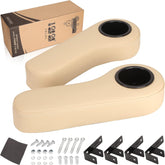
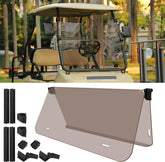
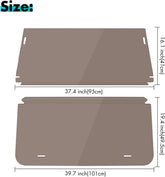

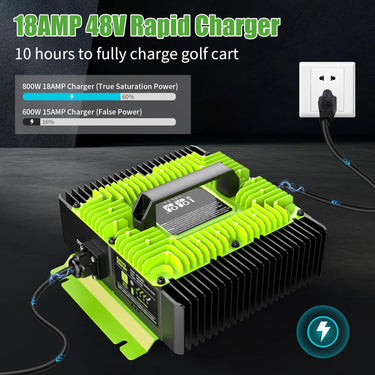
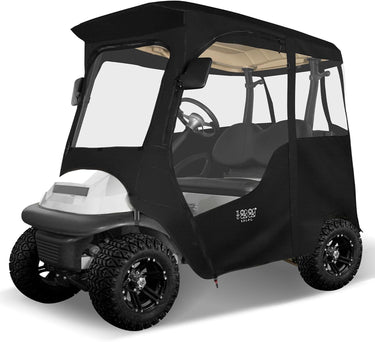
Leave a comment
Please note, comments need to be approved before they are published.